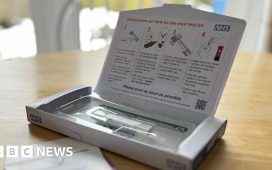
‘Patentability’ is a term which refers to how patentable an invention is. While it may seem obvious to some – there are a handful of important rules and regulations which may restrict you from being able to patent a MedTech invention.
This guide will explain everything you need to know before investing time and money in a patent. We’ll answer the question of ‘what is patentability?’ and explain the core rules of what can not be patented.
Let’s get into it!
Before You Think About Applying for a Patent…
Before you even begin to think about applying for a patent, you need to know that your invention is fully original.
Patents will not be issued for inventions that are copies or simple modifications of existing things (for example, you can’t add an extra leg to a traditional chair and call it ‘innovative’). Therefore, research is important to ensure that nothing else exists in your particular invention niche.
You can do this by utilising ‘Patent Research’, an online exploration in which you search patent databases to determine patentable inventions. Most large companies will use an official analytics agency to help them with this, as it makes it much faster to make succinct conclusions.
However, if you need more resources to hire an external agency, you can use government resources to help you. In the UK, the Intellectual Property Office allows you to search for patents; in the US, USPTO has its own patent database.
What Can You Patent?
The next thing you need to do to ensure your idea is patentable is checking that it meets your government’s requirements for what can obtain a patent. Some things which can be patented include:
- Software and computer-implemented inventions
- Biotechnological and pharmaceutical inventions
- Designs for new products or objects
- Plants (in some cases)
- Machines and mechanical devices
- Chemical compositions and compounds
- Industrial processes
In general, anything useful, novel and applicable can be patented. However, it has to be something new that isn’t ‘obvious’ to anyone with ordinary skills in that field.
What Can’t You Patent?
There are several things which need to be patentable. These are usually presented as abstract ideas (for example, a way of solving a mathematical problem). You can not patent:
- Laws of nature
- Natural phenomena
- Purely aesthetic inventions
- Literary, dramatic, musical or artistic works
- A way of doing business, playing a game or thinking
- A method of medical treatment or diagnosis
- A discovery, scientific theory or mathematical method
- The way information is presented
In MedTech patenting, it’s important to remember that while MedTech technology can be patented, treatment or diagnosis can not be. There are somewhat different rules regarding what is ethical to patent under different governments, so it’s important to check with your jurisdiction before pursuing an application.
Prior Art in MedTech Patenting
Prior art is a legal term used in intellectual property law that refers to any information made publicly available before the date of an invention. This prevents people from patent infringement, as if the invention has previously been referred to in publications, draft images and other public disclosures – it could be assumed the invention is not original.
When applying for a patent, you or your analysis team must double-check prior art to ensure no public mention of your invention has occurred before your creation of it. If it has been, and you can’t provide evidence to show that your invention came first, you may be denied your patent.
Case Study: Medtech Patenting In Pallin v Singer (1995)
In the 1995 Pallin v. Singer case, the U.S. Court of Appeals for the Federal Circuit evaluated whether a patent for a surgical stapling invention was invalid due to the existence of prior art.
Dr Samuel Pallin attempted to patent a type of stitchless cataract surgery, believing he could licence this procedure to other ophthalmologists. Dr Jack Singer, seeing this, refused a demand for royalties and began his movement against medical procedure patenting.
Ultimately, the U.S. Court found that the patent was invalid because Singer’s device did not differ enough from those existing in the prior art. Even though it had a slightly different presentation, its functions were too similar to be seen as ‘original’.
This case was important for establishing what can be patented in the MedTech industry. It also raised ethical discussions about whether things that can improve medical treatments for patients should be patented and privatised.
Is Your MedTech Invention Patentable?
If you’ve been through this article and decided your inventions meet the MedTech patenting requirements, you can apply for your official patenting with your governing body. We hope this article has answered your question of ‘what is patentability?’ and that you have great success with your invention.
We wish you the best of luck with your patent application!











